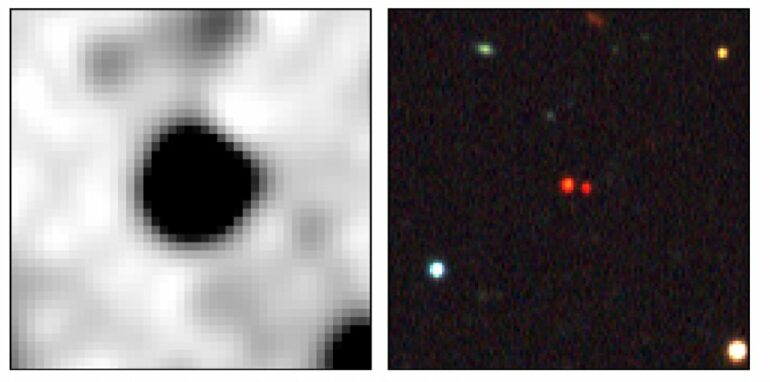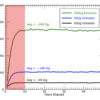A team of astronomers, led by Arizona State University undergraduate student Emma Softich, has discovered a rare pair of brown dwarfs that has the widest separation of any brown dwarf binary system found to date.
Brown dwarfs are celestial objects that are smaller than a normal star and without sufficient mass to sustain nuclear fusion, but that are hot enough to radiate energy. Many brown dwarfs have been discovered with data from NASA’s Wide-field Infrared Survey Explorer (WISE) via the Backyard Worlds: Planet 9 citizen science project, which solicits help from the public to search the WISE image data bank to find brown dwarfs and low-mass stars, some of the sun’s nearest neighbors.
For this study, the team of astronomers inspected images of Backyard Worlds discoveries, where companion brown dwarfs may have been overlooked. In so doing, they discovered a rare brown dwarf binary system (CWISE J014611.20 050850.0AB).
“Wide, low-mass systems like CWISE J014611.20-050850.0AB are usually disrupted early on in their lifetimes, so the fact that this one has survived until now is pretty remarkable,” said co-author Adam Schneider of the U.S. Naval Observatory, Flagstaff Station and George Mason University.
For this study, lead author Softich, who is an astrophysics student at ASU’s School of Earth and Space Exploration, went through about 3,000 brown dwarfs from Backyard Worlds one by one and compared the WISE images to other survey images, looking for evidence of a brown dwarf companion to the original target. The team then used data from the Dark Energy Survey (DES) to confirm that it was indeed a brown dwarf pair.
They then used the Keck Observatory’s Near-Infrared Echellette Spectrometer (NIRES) to confirm that the brown dwarfs have spectral types L4 and L8, and that they are at an estimated distance of about 40 parsecs (130.4 lightyears) from Earth, with a projected separation of 129 astronomical units, or 129 times the distance between the sun and the Earth.
This distance makes CWISE J014611.20-050850.0AB the widest brown dwarf pair found to date, with a separation of around 12 billion miles, three times the separation of Pluto from the sun.
“Because of their small size, brown dwarf binary systems are usually very close together,” Softich said. “Finding such a widely separated pair is very exciting.”
In addition, the gravitational force between a pair of brown dwarfs is lower than for a pair of stars with the same separation, so wide brown dwarf binaries are more likely to be disrupted over time, making this pair of brown dwarfs an exceptional find.
The team hopes this discovery will allow astronomers the chance to study brown dwarf binary systems and to develop models and procedures that will help in recognizing more of them in the future.
“Binary systems are used to calibrate many relations in astronomy, and this newly discovered pair of brown dwarfs will present an important test of brown dwarf formation and evolution models,” said co-author Jennifer Patience, who is Softich’s adviser at ASU.
More information:
A press briefing on these findings was held by the American Astronomical Society (AAS) at 2:15 p.m. MST on Thursday, Jan. 13, under the category of “Intriguing Stars & Citizen Discoveries.” The related research article, under review for publication in the AAS Astrophysical Journal, is titled “CWISE J014611.20-050850.0AB: The Widest Separation Field Brown Dwarf Binary.”
Provided by
Arizona State University
Citation:
Team of astronomers finds widest separation of brown dwarf pair to date (2022, January 13)



